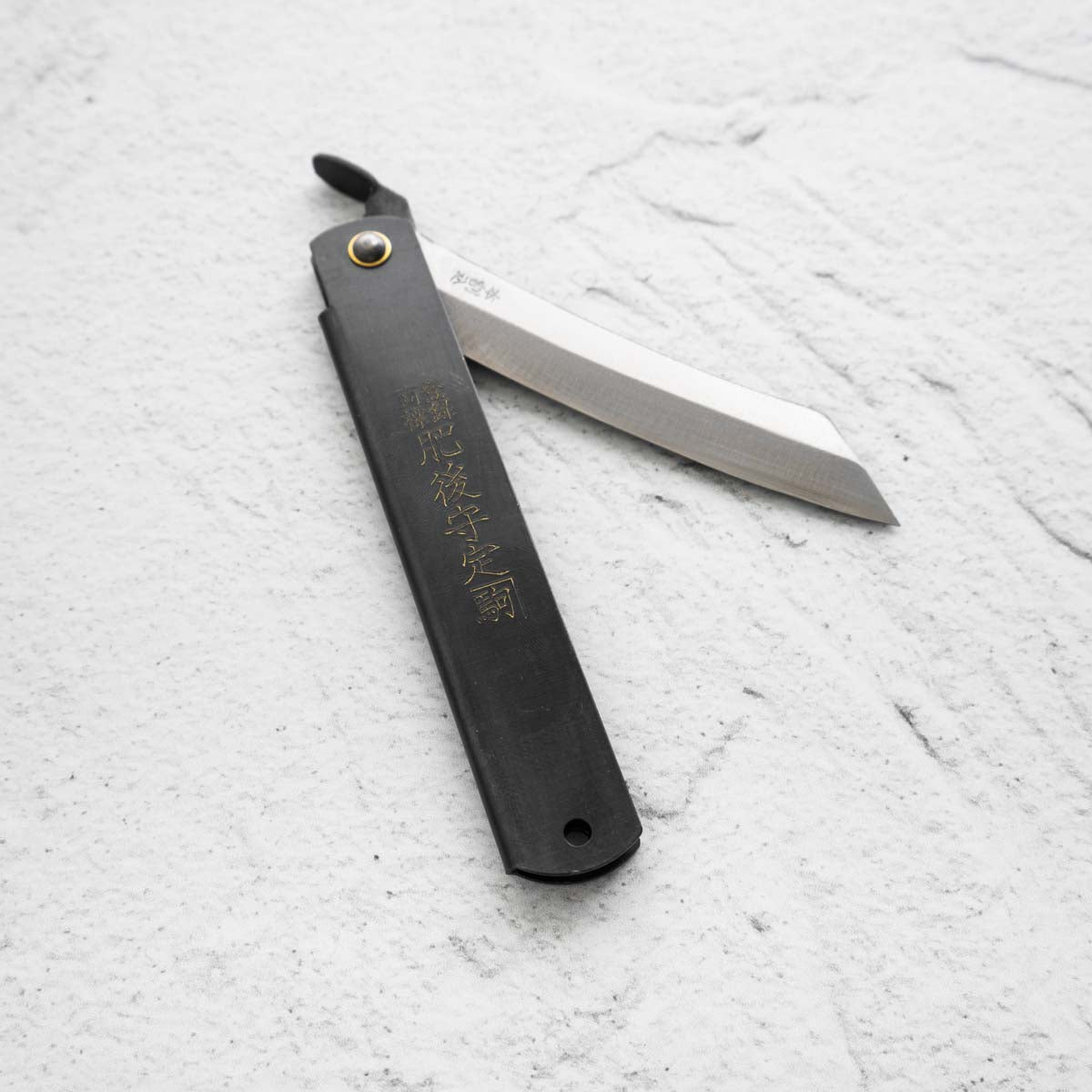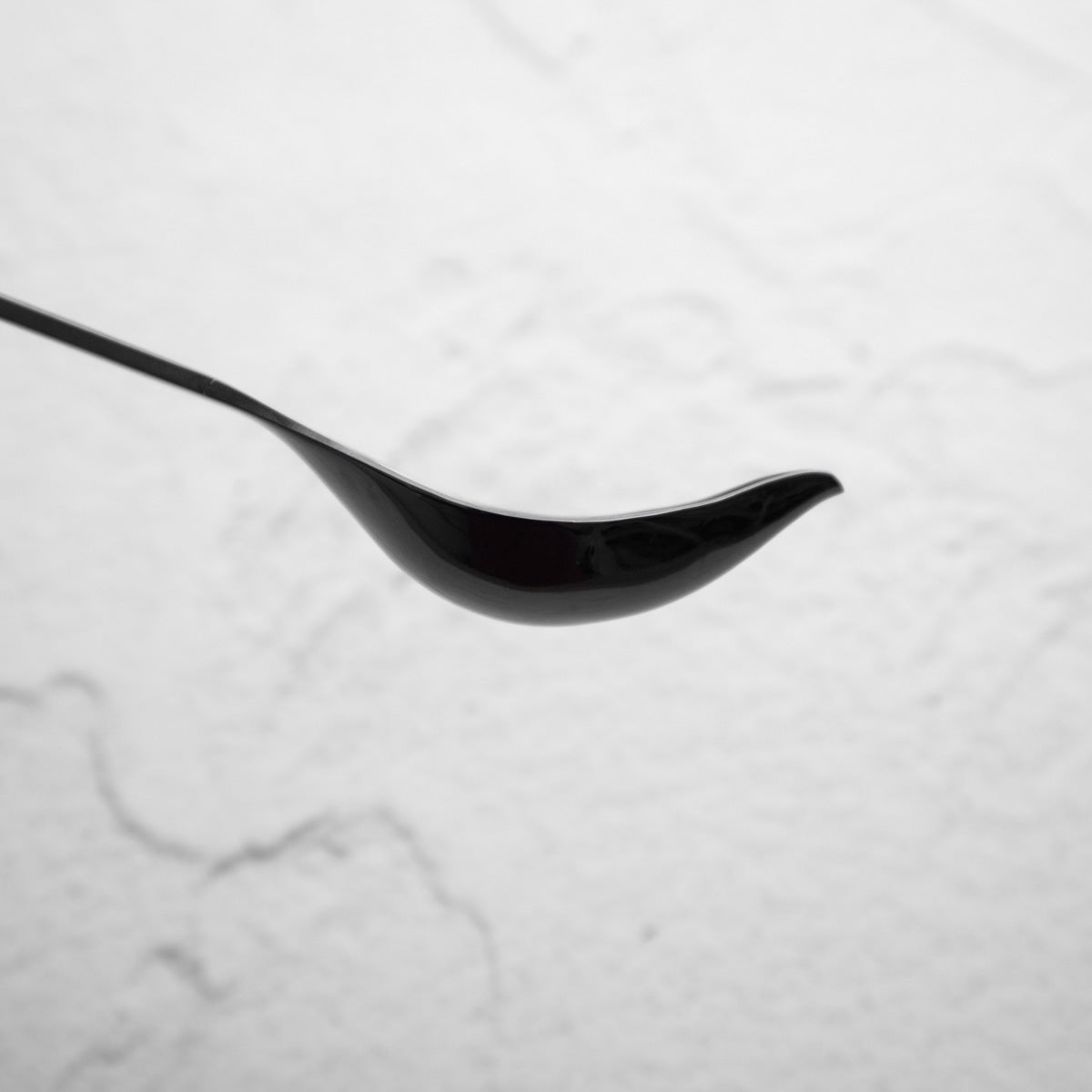Sort by:
The high-grit ceramic honing rod is an essential tool for maintaining the sharpness of your Japanese knives.
With correct use, it can double your period between sharpening, allowing for easy maintenance of your sharp whetstone edges.
A high grade 5000 grit ceramic is wrapped around a rubber shock resistant core, protecting the ceramic from breaking if dropped.
Accessories Information
– Plastic blade guard with felt lining
– 22cm length
– Most suited to 18cm to 21cm chef knives
Please note, carbon steel blades, when not oiled, can rust when stored in blade guards lined with felt. Please ensure to completely dry and oil your carbon steel knives before using the blade guard, and not to store them in felt guards for long periods of time.
*Logo may vary from item pictured*
Accessories Information
– Plastic blade guard with felt lining
– 18cm length
– Most suited to 15-17cm chef knives
Please note, carbon steel blades, when not oiled, can rust when stored in blade guards lined with felt. Please ensure to completely dry and oil your carbon steel knives before using the blade guard, and not to store them in felt guards for long periods of time.
*Logo may vary from item pictured*
Accessories Information
– Plastic blade guard with felt lining
– 27cm length
– Most suited to 24cm chef knives
Please note, carbon steel blades, when not oiled, can rust when stored in blade guards lined with felt. Please ensure to completely dry and oil your carbon steel knives before using the blade guard, and not to store them in felt guards for long periods of time.
*Logo may vary from item pictured*
Accessories Information
– Plastic blade guard with felt lining
– 16cm length
– Most suited to 12-15cm chef knives
Please note, carbon steel blades, when not oiled, can rust when stored in blade guards lined with felt. Please ensure to completely dry and oil your carbon steel knives before using the blade guard, and not to store them in felt guards for long periods of time.
*Logo may vary from item pictured*
Double thickness, heavy-duty canvas knife roll. *(Now with embroidered logo))
- Elastic loops
- 6 slots for knives/tools
- Steel rings
- Fits knives with an overall length of 430mm
- Pocket width 65mm
- Leather-lined pocket ends for extra durability
- Unfolded measurements: 650mm tall x 590mm wide
Knife Information
1894- Mr. Tasaburo Shigematsu, a hardware wholesaler, introduced a new pocket knife with its blade and sheath folded by installing a small handle “Chikiri (tail)” on the blade, while inspired by the knife he brought back from Kagoshima.
He named it “Higonokami Knife” because many of his customers were in Kumamoto area (formally Higo country), which turned out to dramatically increase his sales. The blades have gradually changed their shapes. Unlike single-edged knives, the double-edged blades (V-shaped cross section) were in those days considered common. The earlier blades had a sharper tip (shape of a bamboo leaf), but now they have square shapes. The sheaths had a vertically folding style and a cross folding style, now the vertical one has to be custom made.
In 1911, at the First Kobe Export Articles Competitive Exhibition, Crown Prince (later Emperor Taisho) liked Higonokami on display very much and bought one, which is said to have helped its fame further spread.
The Higonikami is a fantastic traditional utility knife at a low cost.
Specifications
| Style: | Higonokami |
| Blade Length: | 92mm |
| Weight: | 70g |
| Bevel: | Double Bevel |
| Blade Material: | Laminated SK Carbon Steel |
| Handle Material: | Black Nickel |
Double thickness, heavy-duty canvas knife roll.
- Elastic loops
- 6 slots for knives/tools
- Steel rings
- Fits knives with an overall length of 430mm
- Pocket width 65mm
- Unfolded measurements: 650mm tall x 590mm wide
Accessories Information
– Plastic blade guard with felt lining
– 30cm length
– Most suited to 27/30cm chef knives
Please note, carbon steel blades, when not oiled, can rust when stored in blade guards lined with felt. Please ensure to completely dry and oil your carbon steel knives before using the blade guard, and not to store them in felt guards for long periods of time.
*Logo may vary from item pictured*
Knife Information
1894- Mr. Tasaburo Shigematsu, a hardware wholesaler, introduced a new pocket knife with its blade and sheath folded by installing a small handle “Chikiri (tail)” on the blade, while inspired by the knife he brought back from Kagoshima.
He named it “Higonokami Knife” because many of his customers were in Kumamoto area (formally Higo country), which turned out to dramatically increase his sales. The blades have gradually changed their shapes. Unlike single-edged knives, the double-edged blades (V-shaped cross section) were in those days considered common. The earlier blades had a sharper tip (shape of a bamboo leaf), but now they have square shapes. The sheaths had a vertically folding style and a cross folding style, now the vertical one has to be custom made.
In 1911, at the First Kobe Export Articles Competitive Exhibition, Crown Prince (later Emperor Taisho) liked Higonokami on display very much and bought one, which is said to have helped its fame further spread.
The Higonikami is a fantastic traditional utility knife at a low cost.
Specifications
| Style: | Higonokami |
| Blade Length: | 65mm |
| Casing Length: | 90mm |
| Casing Width: | 15mm |
| Weight: | 33g |
| Bevel: | Double Bevel |
| Blade Material: | Laminated SK Carbon Steel Nashiji Finish |
| Handle Material: | Black Steel |

























